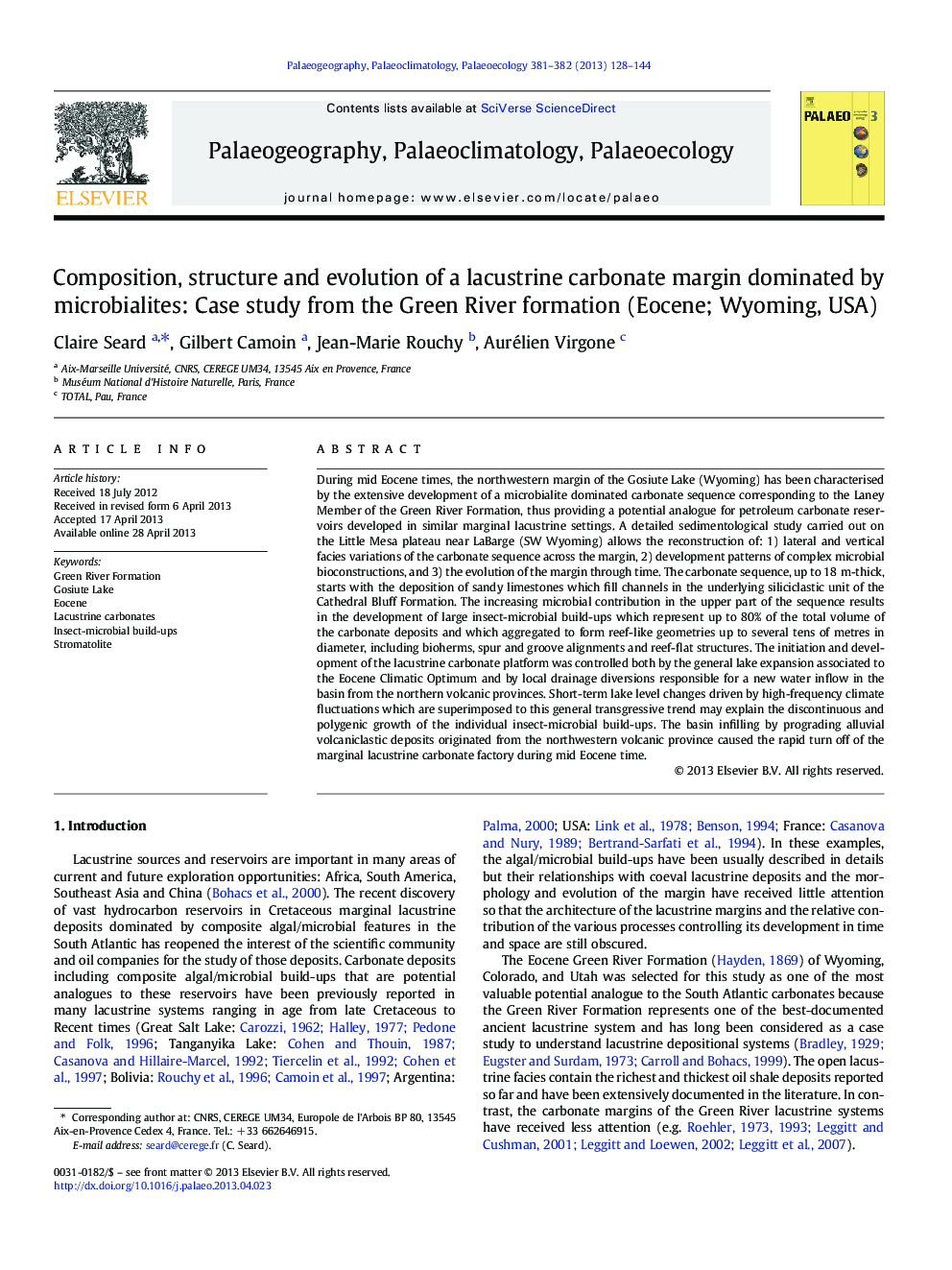| کد مقاله | کد نشریه | سال انتشار | مقاله انگلیسی | نسخه تمام متن |
|---|---|---|---|---|
| 4466540 | 1622206 | 2013 | 17 صفحه PDF | دانلود رایگان |

• We reconstruct the development of an Eocene microbial-dominated lacustrine margin.
• This study provides a potential analogue for lacustrine carbonate reservoirs.
• This study emphasises the heterogeneity of marginal lacustrine carbonate sequences.
• The large-scale evolution of the margin was controlled by the general lake expansion.
• Short-term lake-level variations control the development of each build-up.
During mid Eocene times, the northwestern margin of the Gosiute Lake (Wyoming) has been characterised by the extensive development of a microbialite dominated carbonate sequence corresponding to the Laney Member of the Green River Formation, thus providing a potential analogue for petroleum carbonate reservoirs developed in similar marginal lacustrine settings. A detailed sedimentological study carried out on the Little Mesa plateau near LaBarge (SW Wyoming) allows the reconstruction of: 1) lateral and vertical facies variations of the carbonate sequence across the margin, 2) development patterns of complex microbial bioconstructions, and 3) the evolution of the margin through time. The carbonate sequence, up to 18 m-thick, starts with the deposition of sandy limestones which fill channels in the underlying siliciclastic unit of the Cathedral Bluff Formation. The increasing microbial contribution in the upper part of the sequence results in the development of large insect-microbial build-ups which represent up to 80% of the total volume of the carbonate deposits and which aggregated to form reef-like geometries up to several tens of metres in diameter, including bioherms, spur and groove alignments and reef-flat structures. The initiation and development of the lacustrine carbonate platform was controlled both by the general lake expansion associated to the Eocene Climatic Optimum and by local drainage diversions responsible for a new water inflow in the basin from the northern volcanic provinces. Short-term lake level changes driven by high-frequency climate fluctuations which are superimposed to this general transgressive trend may explain the discontinuous and polygenic growth of the individual insect-microbial build-ups. The basin infilling by prograding alluvial volcaniclastic deposits originated from the northwestern volcanic province caused the rapid turn off of the marginal lacustrine carbonate factory during mid Eocene time.
Journal: Palaeogeography, Palaeoclimatology, Palaeoecology - Volumes 381–382, July 2013, Pages 128–144